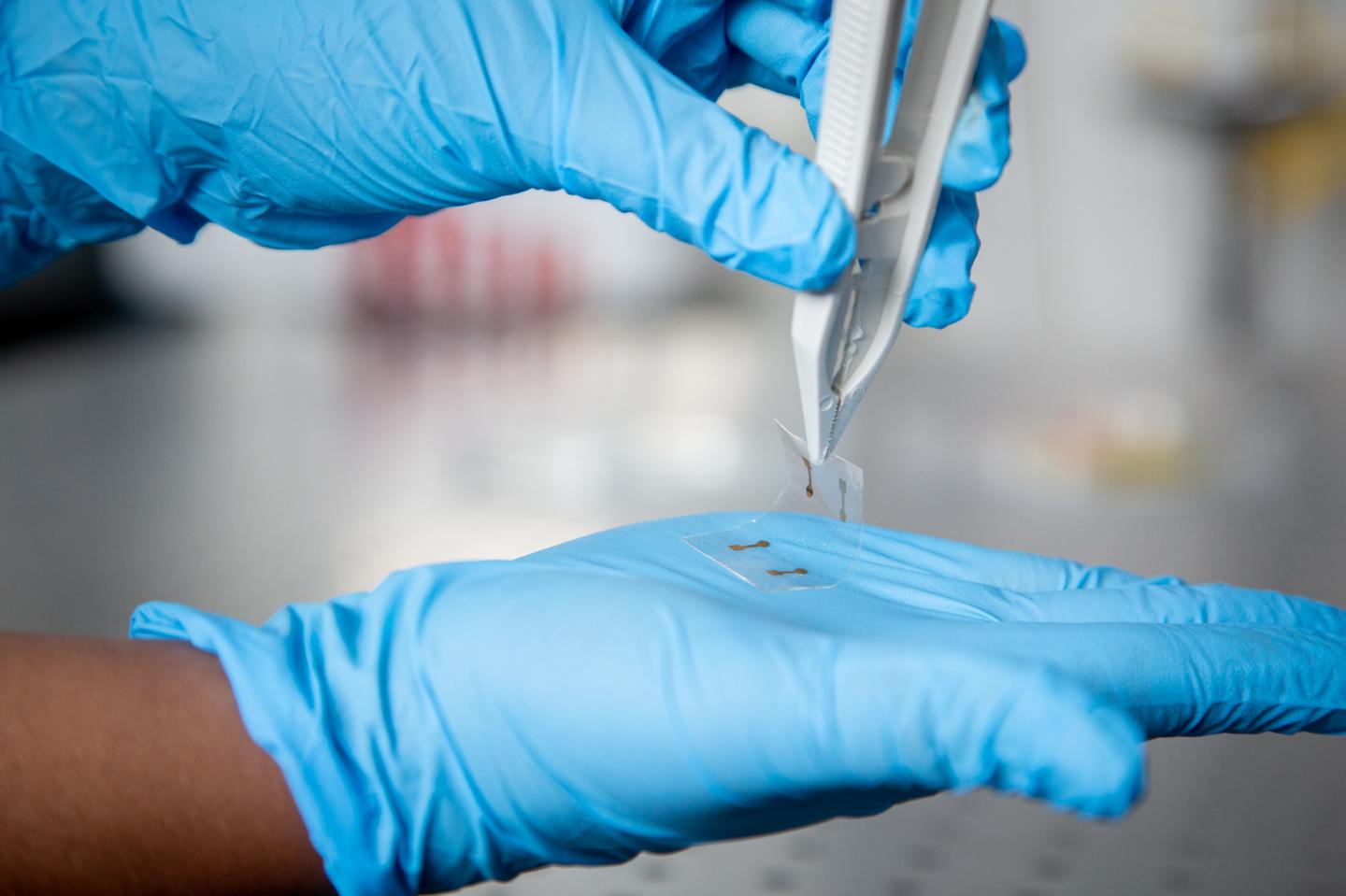New 2D oxide fills gap in materials spectrum

Ultrathin beta-tellurite provides a high mobility p-type semiconductor for making fast, transparent circuits
For several decades, researchers have sought a new class of electronics based on semiconducting oxides, whose optical transparency could enable these fully-transparent electronics.
Now an Australian team led by scientists at RMIT (Royal Melbourne Institute of Technology) has introduced ultrathin beta-tellurite to the 2D semiconducting material family, providing an answer to this decades-long search for a high mobility p-type oxide.
"This new, high-mobility p-type oxide fills a crucial gap in the materials spectrum to enable fast, transparent circuits," says team leader Torben Daeneke, who led the collaboration across three FLEET nodes.
FLEET connects 20 chief investigators from seven participating organisations around Australia and 25 partner investigators from 18 organisations internationally. The FLEET team is interdisciplinary with high-profile researchers from atomic physics, condensed matter physics, materials science, electronics, nanofabrication and atomically thin materials).
Other key advantages of the long-sought-after oxide-based semiconductors are their stability in air, less-stringent purity requirements, low costs and easy deposition.
"In our advance, the missing link was finding the right, 'positive' approach," says Torben.
A barrier to oxide devices has been that while many high-performance n-type oxides are known, there is a significant lack of high-quality p-type oxides.
However in 2018 a computational study revealed that β-TeO2 could be an attractive p-type oxide candidate, with tellurium's peculiar place in the periodic table meaning it can behave as both a metal and a non-metal, providing its oxide with uniquely useful properties.
"This prediction encouraged our group at RMIT University to explore its properties and applications," says Daeneke, who is a FLEET associate investigator.
Liquid metal - pathway to explore 2D materials
Daeneke's team demonstrated the isolation of β-TeO2 with a specifically developed synthesis technique that relies on liquid metal chemistry.
"A molten mixture of tellurium and selenium is prepared and allowed to roll over a surface," explains co-first author Patjaree Aukarasereenont.
"Thanks to the oxygen in ambient air, the molten droplet naturally forms a thin surface oxide layer of beta-tellurite. As the liquid droplet is rolled over the surface, this oxide layer sticks to it, depositing atomically thin oxide sheets in its way."
"The process is similar to drawing: you use a glass rod as a pen and the liquid metal is your ink," explains Aukarasereenont, who is a FLEET PhD student at RMIT.
While the desirable β-phase of tellurite grows below 300degC, pure tellurium has a high melting point, above 500degC. Therefore, selenium was added to design an alloy that has a lower melting point, making the synthesis possible.
"The ultrathin sheets we obtained are just 1.5 nanometres thick - corresponding to only few atoms. The material was highly transparent across the visible spectrum, having a bandgap of 3.7 eV which means that they are essentially invisible to the human eye" explains co-author Ali Zavabeti.
Up to 100 times faster
To assess the electronic properties of the developed materials, FETs were fabricated.
"These devices showed characteristic p-type switching as well as a high hole mobility (roughly 140 cm2V-1s-1), showing that β-TeO2 is ten to one hundred times faster than existing p-type oxide semiconductors. The excellent on/off ratio (over 106) also attests the material is suitable for power efficient, fast devices," Patjaree Aukarasereenont said.
"The findings close a crucial gap in the electronic material library," added Zavabeti. "Having a fast, transparent p-type semiconductor at our disposal has the potential to revolutionise transparent electronics, while also enabling better displays and improved energy-efficient devices."
The team plans to further explore the potential of this novel semiconductor. "Our further investigations of this exciting material will explore integration in existing and next-generation consumer electronics," says Daeneke.
FLEET researchers from RMIT, ANU and UNSW collaborated with colleagues from Deakin University and the University of Melbourne. FLEET's Matthias Wurdack (ANU) performed 2D nanosheet transfer experiments while Kourosh Kalantar-zadeh (UNSW) assisted with analysis of material and device characteristics.
'High mobility p-type semiconducting two-dimensional β-TeO2' by Ali Zavabeti et al; Nature Electronics in April 2021.


































